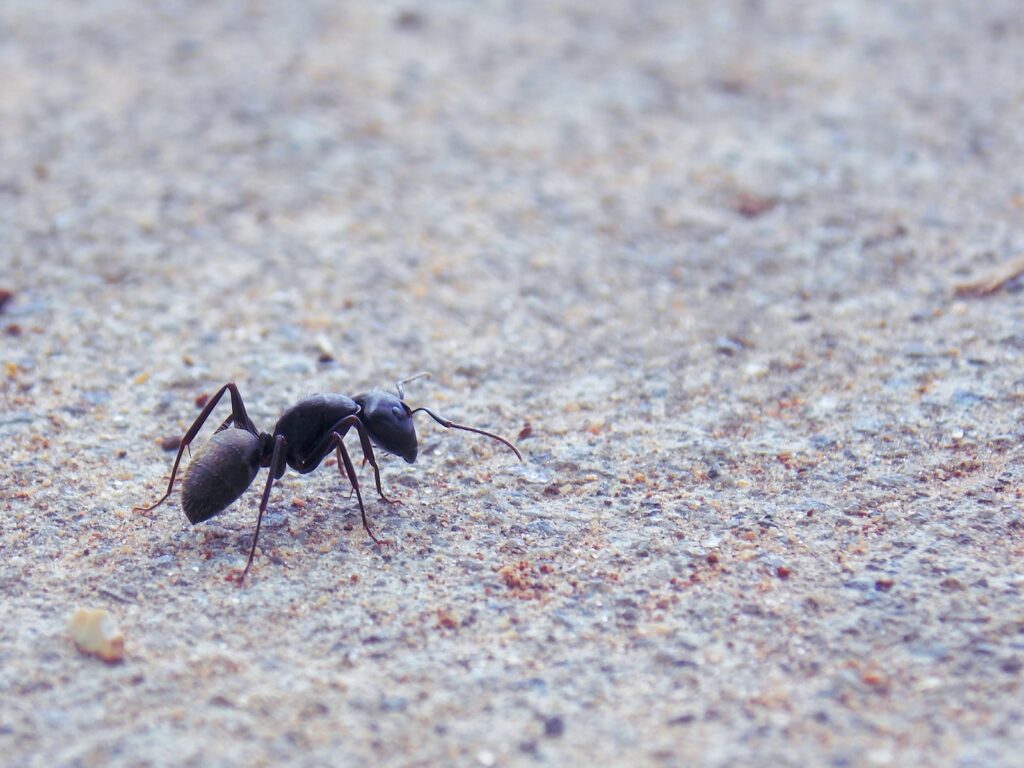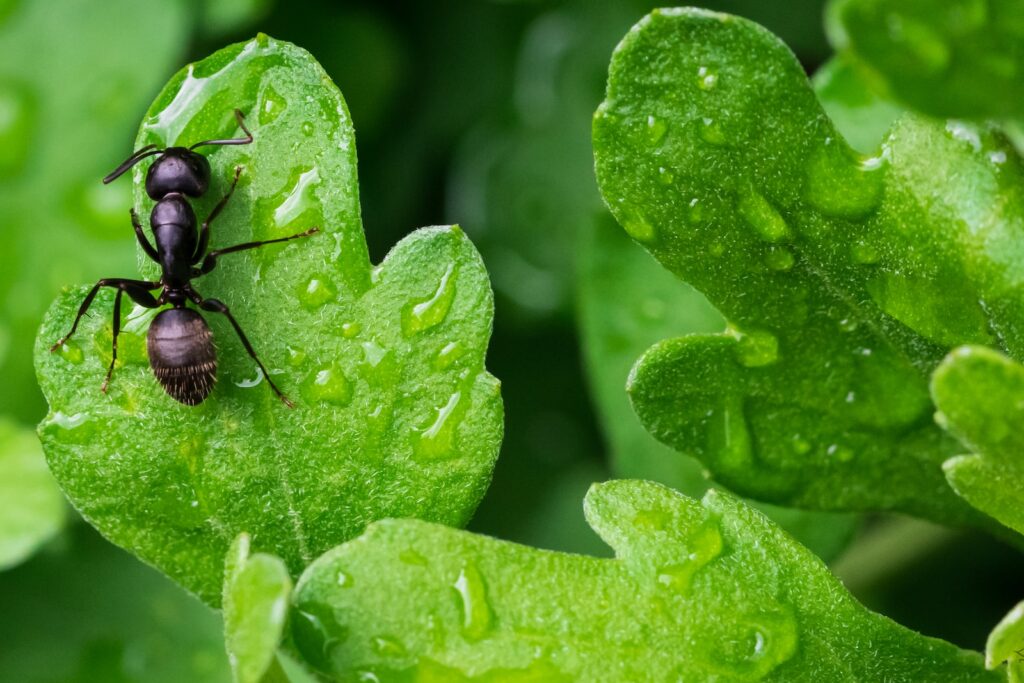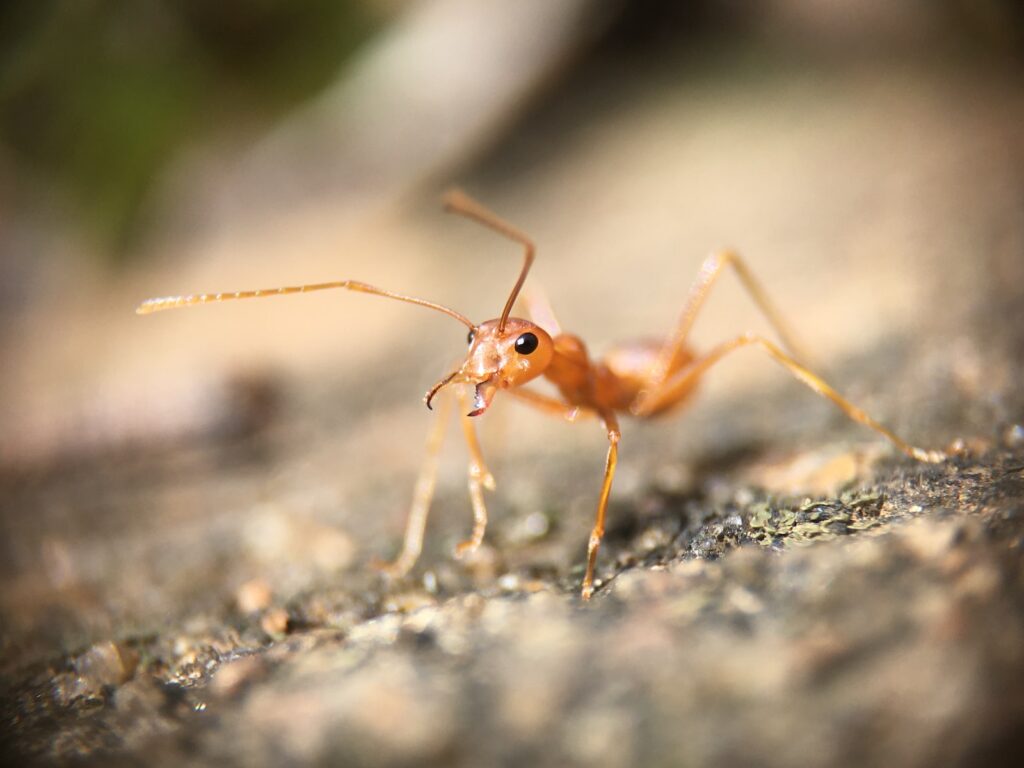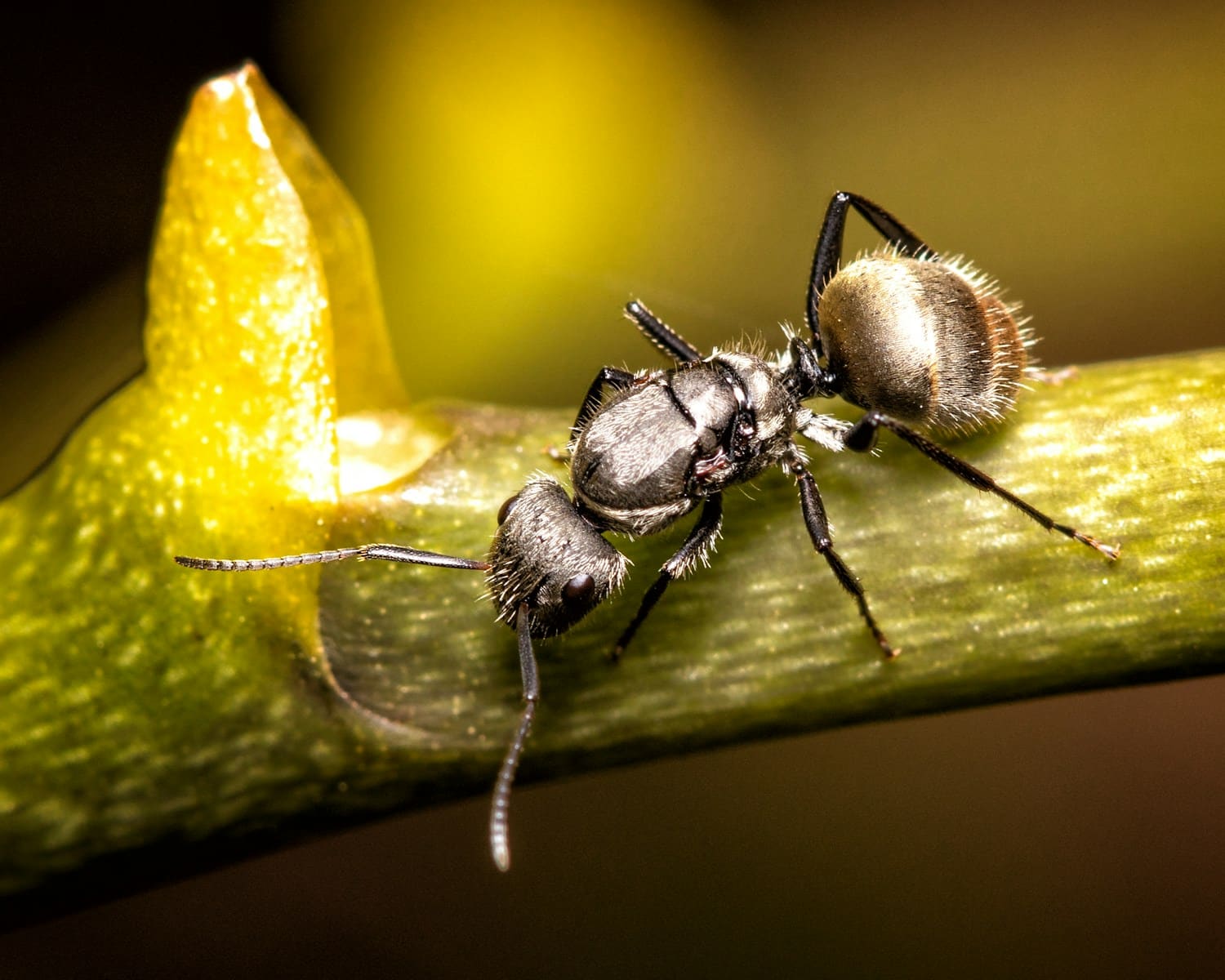Ants are incredible little creatures. These tiny insects work together in massive colonies that can number in the hundreds of thousands.
Within their underground empires, ants take on specialized roles to keep their colonies running smoothly every single day.
But among all that hustle and bustle, have you ever wondered – just how long do ants live? From the queen to the worker ants and males, lifespans can vary dramatically between different members of an ant colony.
Read on as we unravel the mysteries of the ant life cycle and discover just how long these industrious insects live.
The average lifespan of an Ant

The average lifespan of an ant depends greatly on its caste. Worker ants typically live between 2-6 weeks during warmer months, while queens can survive for over 20 years since their sole role is continuous reproduction.
Male ants have the shortest lives, often dying within 1-4 weeks after mating. Species of ants also impact longevity – smaller ants like pavement ants may only live around 50 days but larger carpenter ant workers can survive up to 7 years.
The lifespan disparities enable ants to effectively carry out their specialized roles in service of maintaining the colony as a whole for as long as possible. Their brief individual lives are sacrificed to support the longevity of the queen and thus continuance of the colony.
An Overview of Ant Life Stages
Ants develop through four different life stages:
Eggs
An ant colony begins when a newly mated queen digs a chamber to begin laying her first eggs. Ant eggs are soft, tiny, and delicate. Depending on the species, ant queens may lay hundreds or even thousands of eggs in their lifetime.
Larvae
After three to six weeks, the eggs hatch into ant larvae. Larvae are legless, worm-like grubs that are unable to care for themselves. Worker ants feed and groom them, helping the larvae grow over the next few weeks.
Pupae
In the next stage of development, larvae form pupae. Pupae are contained in protective cocoons while they transform into adult ants. This metamorphosis changes larvae into winged virgin queens and males, or wingless worker ants.
Adults
Finally, the pupae emerge from their cocoons as fully formed adult ants. Now, let’s take a closer look at the life expectancy for the different castes of adult ants.
Male Ants – Born to Die Young
Male ants have one primary purpose – to mate with virgin queens. Males are usually short-lived, surviving anywhere from a few weeks to a month after mating. Their sole goal is to pass on genes before their early demise.
In some species, males don’t even live long enough to mate successfully. Certain types of Ants immediately die after their nuptial flight, perishing shortly after leaving the nest.
For example, (Camponotus pennsylvanicus) males live for only about an hour before suddenly dropping dead, whether mating has occurred or not.
Since they don’t contribute to the colony, males receive low priority for feeding. Limited nutrients shorten their already brief lives even further.
Once they’ve mated, lazy male ants wander and avoid doing any work in the colony. Their freeloader lifestyles are tolerated only until their usefulness runs out.
Queens Reign Supreme in Lifespan

The queen ant is the crown jewel of the colony. As the mother of all ants in her nest, the queen’s longevity is a top priority. Worker ants dedicate themselves entirely to her care and feeding. Their queen produces the eggs essential for continuing the survival of the colony after all.
Most ant queens live between 10-20 years with some exceptions exceeding 30 years. By comparison, ant queens live an astounding 1,500 times longer than their shortest-lived subjects, the male ants. The current record for the longest-living ant queen in captivity is 28.5 years.
Termite queens have worker ants beat, however, living up to 50 years. But ant queens have longer average life spans compared to other flying insects. For example, most butterflies only live about two weeks!
Queens can live through the entire lifespan of their colony, producing offspring year after year until they die naturally of old age. If the queen perishes without a replacement, her colony faces certain doom.
Which Ant Lives The Longest?
Ant lifespan averages differ greatly depending on which species you examine:
- Black ants (Lasius niger) – Worker ants live around 60 days on average.
- Red ants (Myrmica rubra) – Major workers can live up to 5 years.
- Carpenter ants (Camponotus) – Large major workers may survive for 7 years.
- Pavement ants (Tetramorium Caespitum) – Workers only stick around for 4-6 weeks.
- Pharaoh ants (Monomorium pharaonis) – Workers typically only make it to 12 weeks old.
As you can see, some worker ants live for a few months, while others live for many years. There are a few key reasons why certain ants outlive others:
Colony Size
Larger ant colonies support more workers to share colony maintenance tasks. With extra sets of hands, ants in huge colonies like wood ants likely live longer thanks to reduced workloads. Smaller colonies can’t afford this leisure, working ants on a tighter schedule.
Climate Conditions
Ants dwelling in temperate environments deal with harsh winters and sustained periods without foraging. To survive, they live more leisurely and store nutrients through warmer months.
Tropical ants, however, stay active continuously year-round thanks to constant warmth. Their perpetual workload shortens individual lifespans.
Body Size
With ants, bigger means better…bigger lifespans that is. Larger worker ants like major workers have longer life expectations than smaller workers. Their size and strength allow them to perform more strenuous tasks without wearing down.
No matter their life expectancy, all ants work tirelessly for their queen and colonies. But understanding differences between castes and species reveals some ants truly take “busy as an ant” much more seriously than others!
Why Such Short Life Spans?

It might seem odd that ants can live for years trapped underground, yet smaller insects like houseflies survive only for weeks. Why did ants evolve such comparatively short life spans?
Biologists posit several evolutionary explanations for why ants die young:
High Extrinsic Mortality Rates
Many ants meet an untimely end from environmental pressures like harsh weather, droughts, habitat loss from deforestation, etc. Developing long lifespans would be a wasted evolutionary effort when external death rates are extremely high.
Low Mutation Accumulation
Despite their rapid aging, ants and other eusocial species have some of the lowest rates of mutation accumulation in the animal kingdom.
Rather than accumulate mutations, ants quickly weed out genetic defects through natural selection. Queens produce hundreds of offspring, allowing only the strongest ants to survive.
Weakened ants get filtered out swiftly before mutations degrade colonies. This keeps colonies genetically strong over long periods across generations.
Resource Allocation
Supporting longer individual lifespans requires metabolic resources and energy. Eusocial species divert their resources instead towards caring for larvae and queens – the reproductive future of their colonies.
As a result, worker ants can’t achieve the longevity programmed into queens. After all, why would evolution select long-living sterile females that don’t reproduce?
Division of Labor
With size-based divisions of labor, shorter-lived smaller ants take over the high-risk foraging duties. Larger ants can afford to “pace themselves” with less hazardous tasks expected to live longer.
Group Selection
Natural selection in eusocial insects like ants operates on their group as a whole rather than individuals. What matters most evolutionarily is each generation preserves the integrity of the colony by supporting the queen. Long individual lifespans aren’t a priority.
Through these evolutionary mechanisms, ants gained the ability to form superorganism colonies. Incredibly, Ant superorganisms can survive for decades, outliving scores of generations of their short-lived worker ants!
Ants Make The Most of Their Brief Lives
An ant’s life may seem heartbreakingly brief to us. Yet these little warriors stay constantly busy whether their time on Earth is measured in weeks or years. Fighting off intruders, rearing young, and providing for their queen keeps them active around the clock.
While no fountain of youth will extend the lifespan of ants, we can implement some care tips to help worker ants enjoy their longest potential lives:
- Avoid Releasing Multiple Queens Together – Fighting queens will wound and kill one another until one supreme queen remains.
- Don’t Overcrowd Nesting Areas – Cramping ants causes stress which leads to conflict and death.
- Keep Them Well Fed – Generous feeding of sugary foods gives ants energy to power through tasks longer. An ant running on empty won’t last long.
- Maintain Stable Climate Conditions – Fluctuating temperatures, light levels, and humidity tax Ant constitutions.
- Supply Clean Water – Dehydration rapidly shortens an ant’s lifespan. Ensure they always have fresh drinking water.
- Let Them Rest – While ants stay busy, building sheltered sleeping areas allows them to take breaks from the frenzied workload.
Providing ants with attentive care pays off. You’ll be rewarded watching workers thrive for maximum periods as they industriously carry out their elaborate roles.
If an ant could comprehend the individual heroism and self-sacrifice built into its genetic legacy, perhaps it would willingly accept its brief lifespan as its destiny.
By tirelessly serving the queen until death, each Ant contributes to the collective permanence of the magnificently complex colony it comprises.



